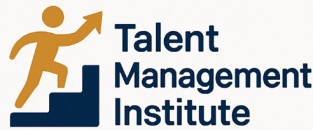Understanding Enterprise Staffing
Decoding the Complexity of Staffing in Enterprises
In today's rapidly evolving job market, enterprises face an intricate puzzle when it comes to optimizing workforce allocation. The need to efficiently manage resources, while ensuring the placement of qualified candidates in the right positions, remains paramount across various industries, including healthcare, IT, and customer service. Understanding the ebb and flow of staffing needs requires insight into both short-term and long-term business objectives. Companies must remain agile, adapting to fluctuating demands and industry trends. Enterprises are not just seeking professionals; they need specific talents that align with their unique goals and challenges. Staffing solutions have morphed, requiring more than a one-size-fits-all approach. Sourcing top talent is a nuanced process, with staffing agencies playing a critical role in bridging gaps quickly and effectively. Moreover, enterprise medical staffing, for instance, calls for specialized knowledge due to the critical nature of healthcare services. Whether agencies supply healthcare professionals or support staff, they must be adept in identifying and deploying the right mix of skills and experience. Furthermore, businesses are pivoting towards more inclusive staffing practices, to not only comply with privacy policies but also to foster diversity within their working environments. This shift is geared towards the creation of balanced teams that drive innovation and provide a range of perspectives that benefit the whole enterprise. To align with contemporary staffing demands, organizations eyeing growth should evaluate their staffing strategies and consider how modern solutions can be integrated to meet these evolving needs. For a deeper understanding of how these allocations fit into overarching talent management roles and responsibilities, explore more here. This enables companies to not only fill open positions with qualified workers but also ensure ongoing development and adjustment of their teams. The focus shifts from merely recruiting to developing a holistic approach that strengthens enterprise operations and workforce satisfaction.The Role of Technology in Staffing
Integrating Technology for Effective Staffing
In the modern enterprise landscape, the role of technology in staffing has become indispensable. With the rise of digital tools and platforms, companies are finding innovative staffing solutions to enhance their workforce management. From healthcare to customer service, technology is reshaping how enterprises approach their staffing needs.
One of the primary advantages of technology in staffing is the ability to streamline the hiring process. Staffing agencies and enterprises can now leverage advanced software to identify qualified candidates efficiently. These tools help in sorting through vast pools of job seekers, ensuring that only the most suitable professionals are considered for open positions.
Enhancing Workforce Efficiency
Technology also plays a critical role in optimizing workforce allocation. With the help of data analytics, companies can predict staffing needs and adjust their strategies accordingly. This is particularly beneficial in industries like healthcare, where medical staffing requires precise planning to ensure that healthcare professionals are available when needed.
Furthermore, technology facilitates the integration of remote work into enterprise staffing strategies. By using digital communication tools, teams can collaborate effectively, regardless of geographical barriers. This flexibility allows companies to tap into a broader talent pool, including top talent from diverse locations.
Embracing Digital Solutions
For enterprises looking to improve their staffing services, embracing digital solutions is crucial. Whether it’s through an online staffing agency or an enterprise medical staffing platform, technology provides the infrastructure needed to support long-term staffing goals. Moreover, these platforms often include features that help maintain compliance with privacy policies and other regulatory requirements.
For those interested in mastering the art of managing a flexible workforce, exploring resources on contingent talent management can provide valuable insights.
Identifying and Bridging Skill Gaps
Pinpointing Skills Deficiencies and Creating Alignment
In modern enterprises, the identification and bridging of skill gaps are crucial for achieving effective staffing. As the business landscape evolves, ensuring the workforce possesses the right skills becomes essential. This process involves evaluating current employees, identifying where additional skills and training are needed, and implementing a strategy to enhance these competencies.
Enterprises often rely on a mix of internal assessments and external tools to pinpoint these gaps. Whether it's through performance reviews or leveraging technology like AI-driven analytics, companies can recognize areas needing improvement. Analytics tools allow businesses to draw insights from data and predict future skill requirements based on industry trends. This data-driven approach is proving invaluable for medical and enterprise staffing solutions alike.
For instance, in the healthcare sector, advances in technology require that professionals continuously adapt and upskill. Likewise, industries across the board must ensure that their workforces are future-ready. To address this, organizations might engage with specialized staffing agency services. These agencies are instrumental in supplying qualified candidates with exact skills needed for open positions, ultimately contributing to efficient workforce allocation.
Furthermore, a pivotal element in addressing skill deficiencies is fostering a learning culture within the organization. By encouraging continuous professional development, enterprises are capable of not only filling immediate job openings but also cultivating top talent to meet long-term strategic objectives. Comprehensive human resources strategies encompassing on-the-job training, workshops, and educational partnerships are effective methods to bridge these skill gaps.
Effective alignment of staffing recruiting processes with identified skill needs ensures that staffing solutions are not just reactive but proactive. Enterprise staffing strategies should incorporate ongoing evaluation for skill development, supported by services like mentoring or job rotation to keep the workforce adaptable and align staff capabilities with evolving enterprise demands.
To delve deeper into optimizing workforce allocation and filling critical positions, consider exploring strategies on optimizing the staff application process for effective talent management, which provides further insights into creating a resilient and highly qualified workforce.
Diversity and Inclusion in Staffing
The Power of Diverse and Inclusive Staffing
In a rapidly evolving enterprise landscape, diversity and inclusion have emerged as key components in optimizing workforce allocation. Incorporating these elements into staffing solutions not only broadens the pool of qualified candidates but also enhances team dynamics and drives innovation. Diversity in staffing means more than just varied demographics; it involves creating an environment where all employees feel valued and respected for their unique contributions. It has been shown that diverse work environments improve problem-solving capabilities and customer service by bringing multiple perspectives to the table. In healthcare, for instance, having a diverse team can lead to more effective patient care by allowing healthcare professionals to better understand and meet the needs of a diverse clientele. Inclusion, on the other hand, ensures that each member of the workforce feels included and is given equal opportunities to succeed. This is critical in staffing across sectors such as healthcare staffing or enterprise staffing where varied talents must collaborate effectively. Inclusive hiring solutions might include adapting recruitment strategies to minimize biases and implementing policies that support work-life balance for employees at all levels. To achieve these staffing goals, enterprises can partner with staffing agencies specializing in diversity and inclusion. These agencies can provide targeted staffing services that address specific needs, such as recruiting diverse job seekers or tailoring staffing recruiting strategies to encompass a broader spectrum of talent. Open positions can be filled more efficiently with a larger pool of qualified candidates, ensuring that enterprises have access to top talent. Embracing diversity and inclusion in staffing is not just a moral imperative but a strategic advantage. Companies that are recognized for their commitment to these principles often see improvements in employee satisfaction, retention rates, and ultimately, company performance. As such, organizations should prioritize creating an inclusive culture where the entire workforce, including medical staffing or administrative roles, feels supported and enabled to excel in their jobs. In conclusion, enterprises that focus on building a diverse and inclusive staffing strategy are better equipped to meet the challenges of the modern job market. Whether through internal human resources initiatives or by engaging a specialized staffing agency, the results are clear: a robust and dynamic workplace ready to innovate and lead in their respective fields.The Impact of Remote Work on Staffing
Adapting Staffing Strategies for Remote Work Environments
The rise of remote work has significantly impacted how enterprises approach staffing solutions. This transformation requires businesses to reevaluate their staffing services, focusing on flexibility and adaptability to align with the changing work landscape. The enterprise workforce now includes a blend of remote and in-office employees, demanding a shift in traditional staffing methods. Employers must implement efficient solutions that cater to both operational and remote setups, ensuring the continuation of productivity and collaboration. The ability to access a global talent pool is one of the most significant advantages of remote work. It enables healthcare staffing agencies, for example, to connect job seekers with enterprises seeking specialized healthcare support, regardless of geographical constraints. This approach enhances the pool of qualified candidates, allowing organizations to select top talent optimized for their project needs. However, businesses must navigate challenges, including regulatory compliance and data security concerns. Human resources departments play a vital role in implementing and maintaining privacy policies that protect both the enterprise and its employees. Agencies specializing in staffing recruiting must ensure their practices align with these new norms, promoting transparency and trust. Moreover, the transition to remote work emphasizes the need for effective communication and management tools. Enterprises must invest in technology that supports remote collaboration, enabling teams to function seamlessly. Staffing services must address this requirement, offering solutions that facilitate virtual team building and a cohesive company culture. In essence, adapting to remote work demands a reimagined approach to staffing. By embracing flexibility, enhancing technological infrastructure, and prioritizing employee well-being, enterprises can successfully navigate this evolving work environment. This adaptability not only ensures continuity but also positions businesses to thrive, securing long-term success in the modern workforce landscape.Future Trends in Enterprise Staffing
Emerging Trends Shaping the Future of Staffing
As enterprises navigate the complexities of staffing in an ever-evolving landscape, several trends are emerging that promise to redefine how businesses approach workforce allocation. Understanding these trends is crucial for organizations aiming to maintain a competitive edge.
AI and Automation in Staffing
The integration of artificial intelligence and automation into staffing processes is transforming how enterprises identify and recruit talent. AI-driven tools are enabling staffing agencies to streamline candidate searches, match qualified candidates to open positions more efficiently, and enhance overall staffing solutions. This technological shift is particularly beneficial in sectors like healthcare, where the demand for skilled professionals is high.
Emphasis on Employee Experience
Modern enterprises are increasingly focusing on enhancing the employee experience to attract and retain top talent. This involves creating a work environment that prioritizes work-life balance, offers opportunities for professional growth, and fosters a sense of belonging. By investing in the well-being of their workforce, companies can improve job satisfaction and reduce turnover rates.
Remote and Hybrid Work Models
The impact of remote work, as discussed earlier, continues to influence staffing strategies. Many enterprises are adopting hybrid work models, allowing employees the flexibility to work from home or the office. This shift requires businesses to rethink their staffing solutions to accommodate diverse work preferences while maintaining productivity and team cohesion.
Focus on Diversity and Inclusion
Diversity and inclusion remain pivotal in shaping the future of staffing. Enterprises are recognizing the value of diverse teams in driving innovation and improving business outcomes. By implementing inclusive hiring practices and fostering an environment that celebrates differences, organizations can attract a broader pool of talent and enhance their competitive advantage.
Data-Driven Decision Making
Data analytics is becoming an indispensable tool in enterprise staffing. By leveraging data, companies can gain insights into workforce trends, identify skill gaps, and make informed decisions about hiring and resource allocation. This data-driven approach allows businesses to optimize their staffing strategies and better align them with organizational goals.
In conclusion, staying ahead in the staffing arena requires a proactive approach to these emerging trends. By embracing technology, prioritizing employee experience, and fostering diversity, enterprises can build a resilient and adaptable workforce ready to meet the challenges of the future.








